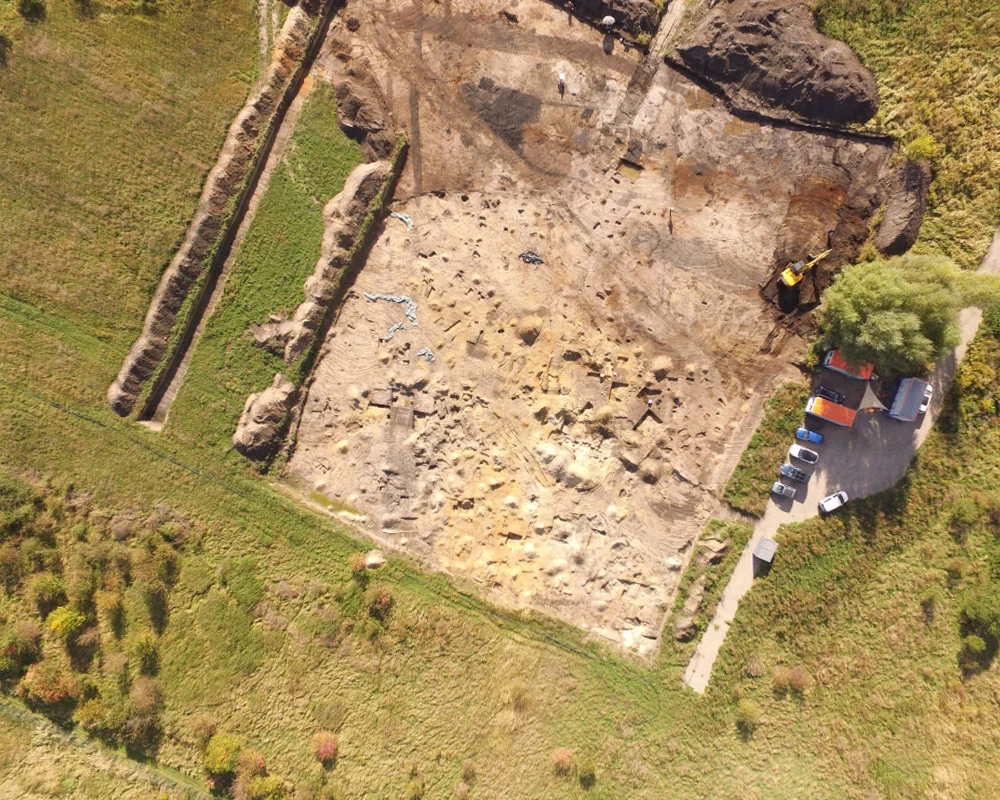Archaeologists from the State Office for Monument Preservation and Archaeology (LDA) Saxony-Anhalt have been conducting excavations at the site of the Hermes Fulfilment GmbH Centre in Haldensleben, Germany.
According to a press statement by the LDA, archaeologists have found traces of ancient settlements that date from the Bronze, Iron, and Middle Ages, located near a castle complex first unearthed in 2010/11.
The earliest phase of settlement dates from the Bronze Age (circa 2200 BC to 750 BC), where the researchers found various settlement pits, ceramics, animal bones, and a well containing a fully intact vessel.
The most notable object from this period is a bronze eyelet-head pin from the Aunjetitz culture, an early Bronze Age people most known for the Nebra Sky Disk discovered in Saxony Anhalt.

During the Middle Ages, the area was heavily occupied with the development of a major settlement consisting of pit houses and post holes from surface-level buildings.
The settlement dates from the 9th/10th centuries, predating the construction of the castle which was built in the mid-11th century. The settlement was bounded by the Ohre River to the north and northwest, and by a broad ditch to the southwest, which likely managed groundwater flow.
During the 11th/12th centuries, the settlement expanded southward joining the castle complex, which remained occupied until the late 13th century despite the castle being destroyed in 1167.
Within the interior of the settlement, archaeologists found evidence of textile production with the discovery of loom remains and numerous weights and spindle whorls. Excavations also found the remnants of stone hearths, storage ovens, and the remains of a stone cellar.
“In close and very good cooperation with Hermes Fulfilment GmbH, significant settlement findings from the Bronze and Iron Ages as well as the Middle Ages can be archaeologically documented as part of the renewed investigations,” said the LDA.
Header Image Credit : LDA – Bodo Hänler
Sources : State Office for Monument Preservation and Archaeology (LDA) Saxony-Anhalt







